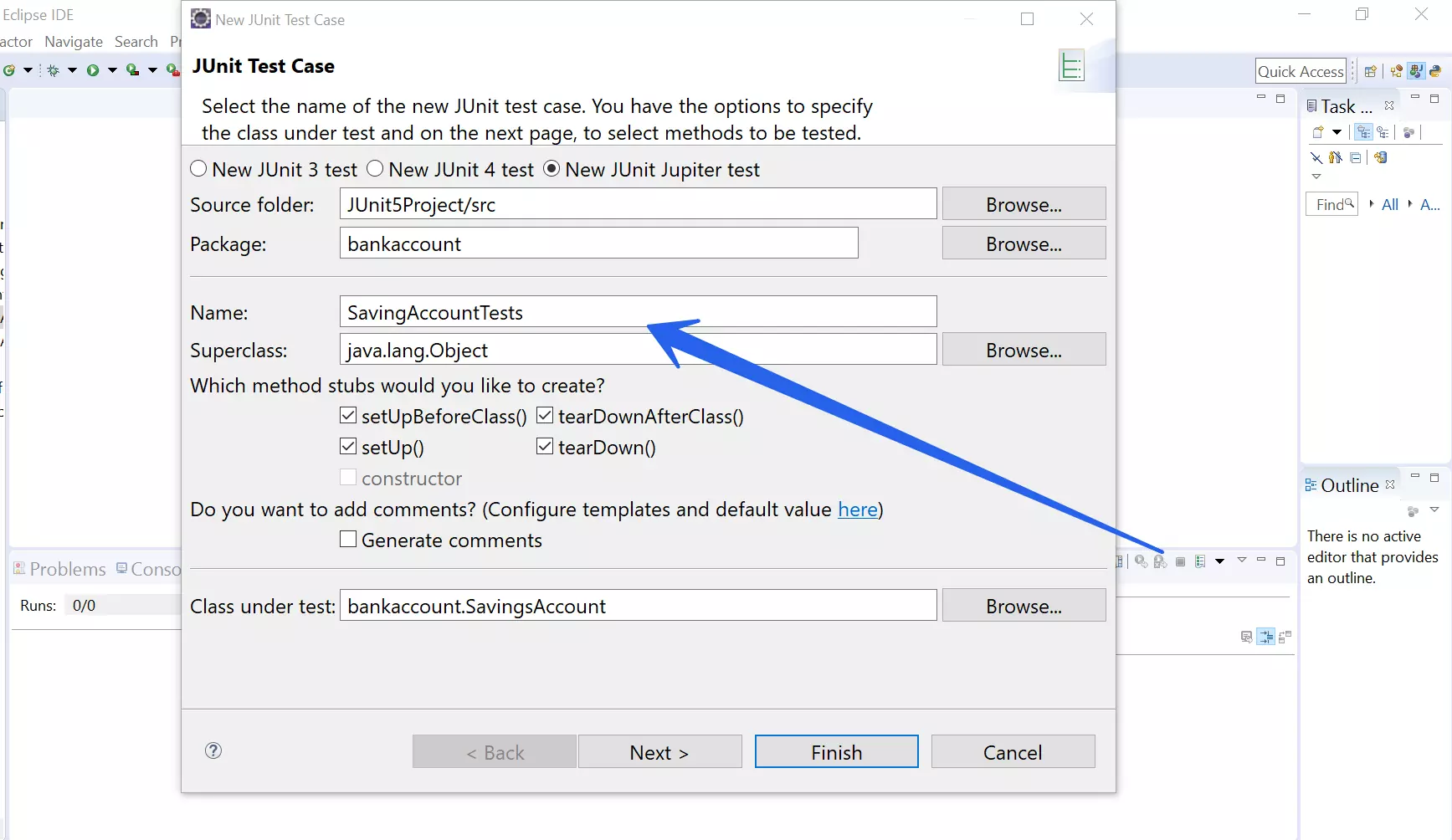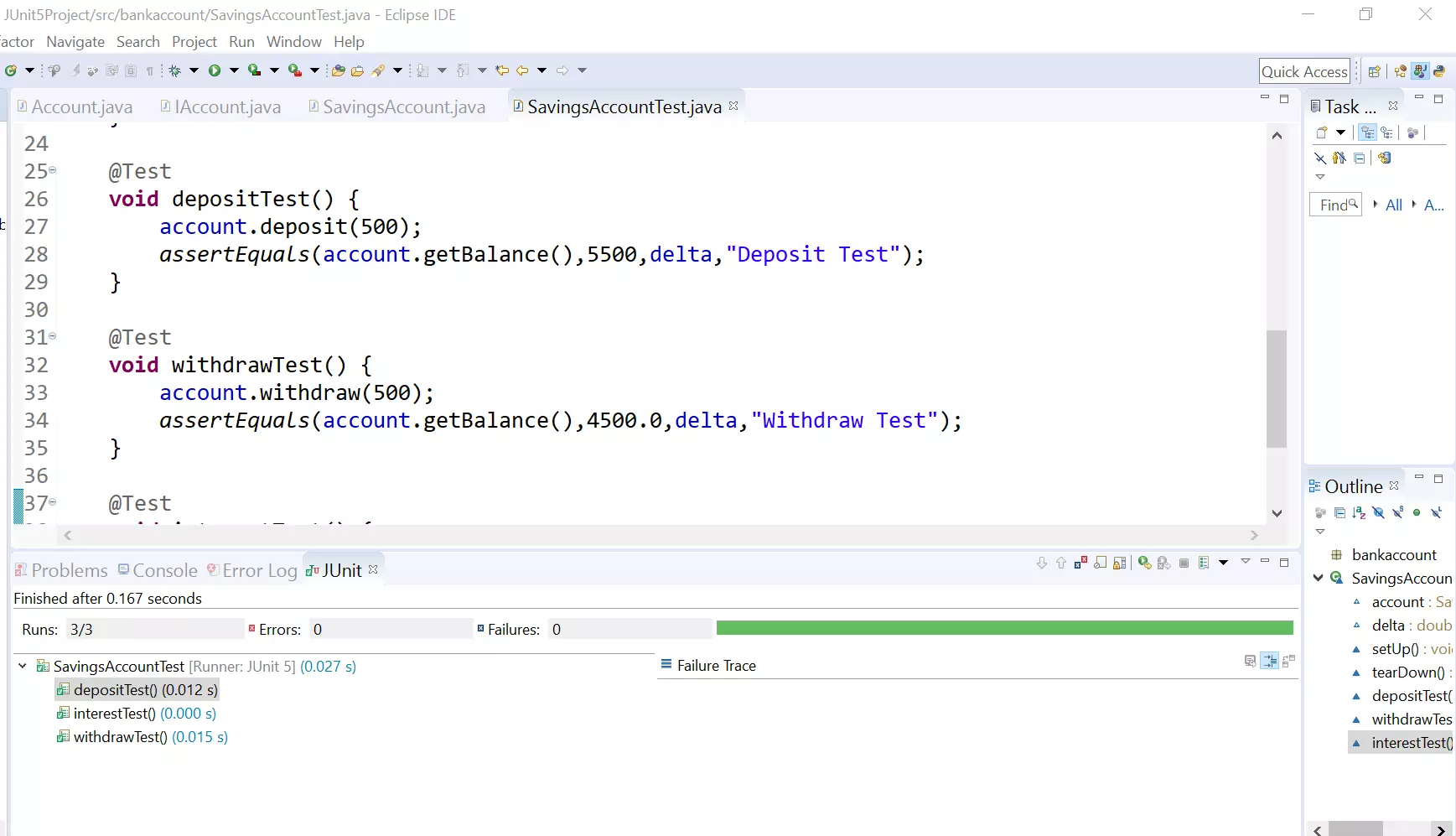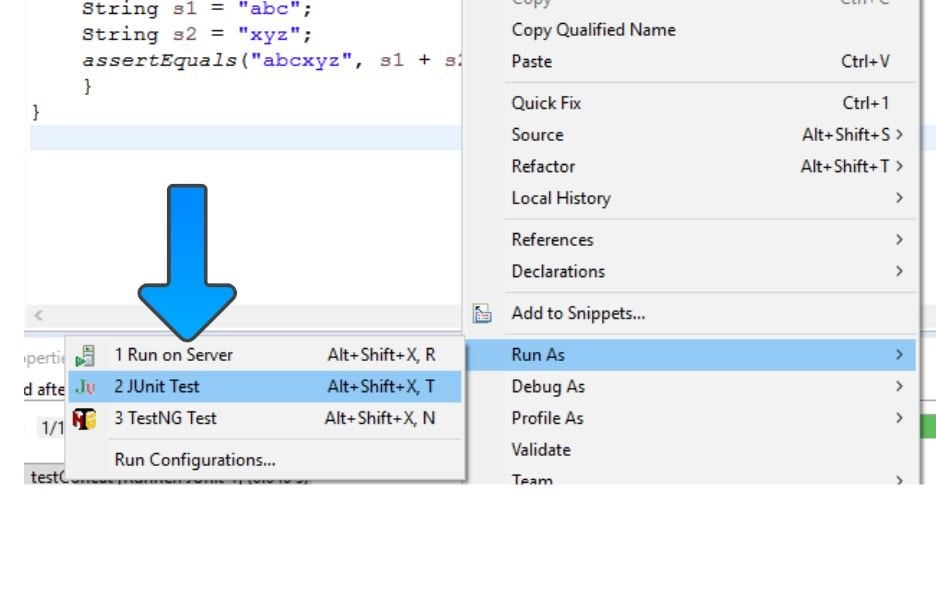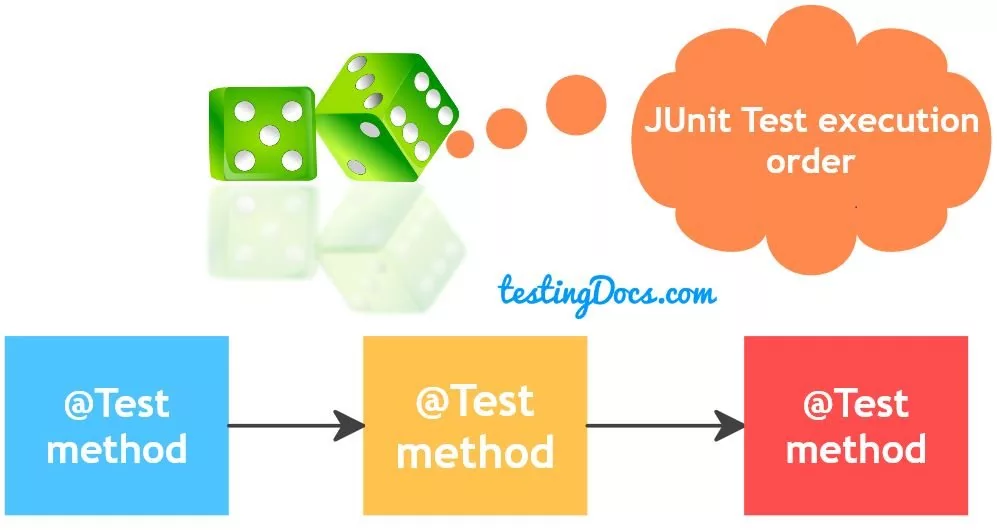Bank Account JUnit Tests
Overview
In this tutorial, we will learn how to develop JUnit tests for the bank account. Most of the tutorial is listing out the code and some sample tests on the concrete class SavingsAccount. In case you need more explanation, please comment below in the comments section.
Consider the following classes
- An abstract Account class.
- Interface IAccount.
- Subclass of Account SavingsAccount
Account class
package bankaccount;
public abstract class Account {
private String name;
private int accountNumber;
private double balance;
public Account(String name,int accountNumber, double initBalance){
this.name=name;
this.accountNumber = accountNumber;
this.balance = initBalance;
}
//no-arg constructor
public Account(){
}
public String getName() {
return name;
}
public void setName(String str) {
this.name = str;
}
public int getAccountNumber() {
return accountNumber;
}
public double getBalance() {
return balance;
}
public void setBalance(double newBalance) {
this.balance = newBalance;
}
public void setAccountNumber(int number) {
this.accountNumber = number;
}
}
Interface IAccount
package bankaccount;
//interface
public interface IAccount {
public void withdraw(double amount);
public void deposit(double amount);
public int getAccountNumber();
public double getBalance();
public String getName();
}
SavingsAccount
package bankaccount;
public class SavingsAccount extends Account implements IAccount {
private final double INTERESTRATE = 0.15;
public SavingsAccount(String name,int accountNumber, double initBalance) {
super(name,accountNumber, initBalance);
}
public SavingsAccount() {
}
@Override
public void withdraw(double amount) {
double newBalance = getBalance() - amount;
if(newBalance<0){
System.out.println("Withdraw not permitted");
return;
}else{
System.out.println("Amount "+amount+"withdrawn successfully");
}
setBalance(newBalance);
}
@Override
public void deposit(double amount) {
System.out.println("Amount "+amount+" deposited successfully");
double newBalance = getBalance() + amount;
setBalance(newBalance);
}
@Override
public int getAccountNumber() {
return super.getAccountNumber();
}
@Override
public double getBalance() {
return super.getBalance();
}
@Override
public String getName() {
return super.getName();
}
public double calculateInterest() {
if(getBalance() > 0 ) {
return getBalance()*INTERESTRATE;
}
else {
return 0.0;
}
}
}Creating a JUnit 5 Test
Right-click on the Java class New >> Junit Test case . Choose a Test class name and select the methods.

JUnit 5 Tests
package bankaccount;
import static org.junit.jupiter.api.Assertions.assertEquals;
import org.junit.jupiter.api.AfterEach;
import org.junit.jupiter.api.BeforeEach;
import org.junit.jupiter.api.Test;
class SavingsAccountTest {
SavingsAccount account;
double delta=0.001;
@BeforeEach
void setUp() throws Exception {
account= new SavingsAccount();
account.setName("John");
account.setBalance(5000);
account.setAccountNumber(1234);
}
@AfterEach
void tearDown() throws Exception {
account=null;
}
@Test
void depositTest() {
account.deposit(500);
assertEquals(account.getBalance(),5500,delta,"Deposit Test");
}
@Test
void withdrawTest() {
account.withdraw(500);
assertEquals(account.getBalance(),4500.0,delta,"Withdraw Test");
}
@Test
void interestTest() {
double interest = account.calculateInterest();
assertEquals(interest,750.0,delta,"Interest Test");
}
}
All the tests should pass and the green color in the test runner window as shown below.
SavingsAccount Tests in Eclipse









